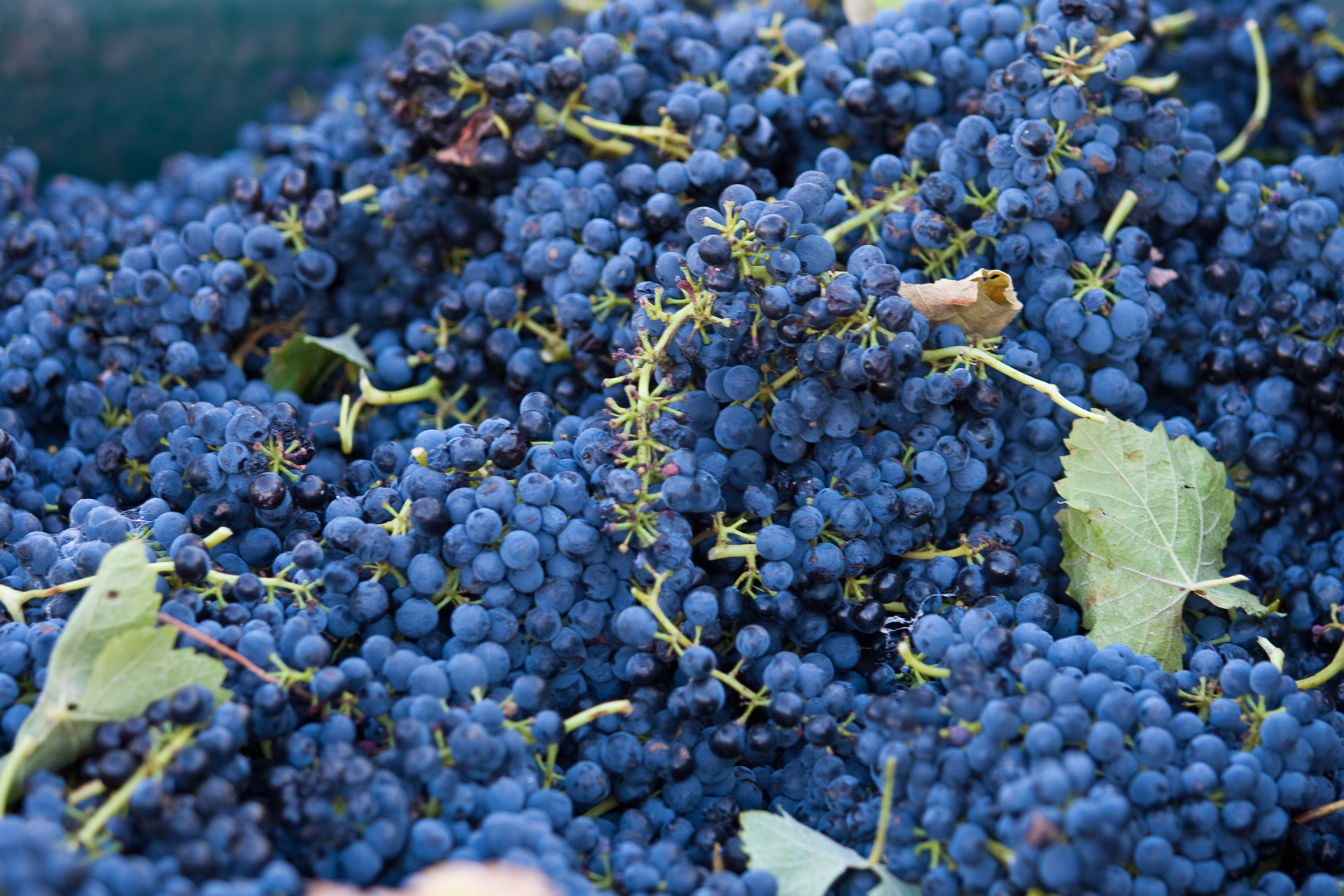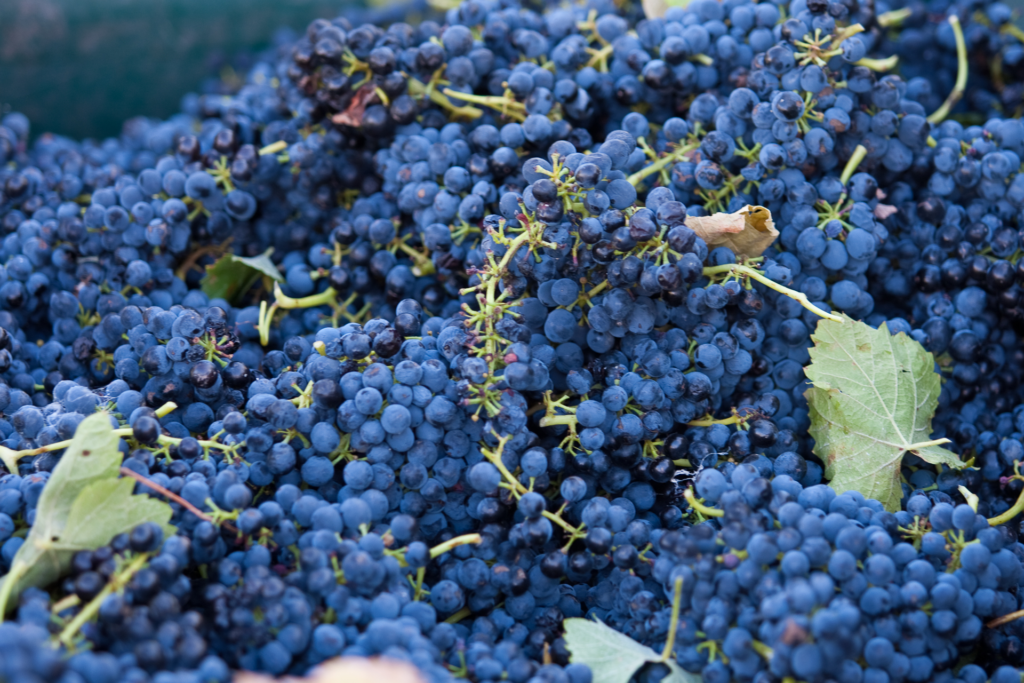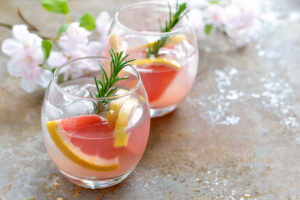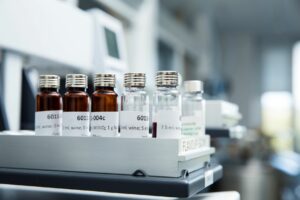
Colour of red grapes – Modified Somers
The principle of this spectroscopic analysis is based on the methods of Somers and Evans. The Somers colour assay was modified to allow the standardisation of pH concentrations of grape samples in a simple one-step dilution with a buffer solution, thus removing inconsistencies between grape matrices and providing faster target response times for analysis. Tannin measurements are derived from a calibration developed from the methyl cellulose precipitable (MCP) tannin assay.
The Modified Somers colour assay on grapes measures the concentration of extractable anthocyanins which are the pigments found in red grapes, and can also determine the total phenolic compounds and tannin in red grapes.
What can this colour assay be used for?
The assay is used to observe differences among vineyards at harvest and observe difference among grapes harvested from the same location in different vintages. The total extractable anthocyanin value has also been shown to correlate well with the potential wine quality.
Which samples are best?
Berry samples are likely to provide the most useful colour result for assessment of the ripeness of the fruit and can be used in conjunction with brix or baumé and pH to decide when to pick the fruit. For grapes, anthocyanin results will be expressed in units of mg/g and phenolics results will be expressed in absorbance units (au)/g, and for wine, mg/L and au for anthocyanin and phenolics results respectively.
The assay can be performed on fresh or frozen red grape berry samples (minimum of 200 grams of berries) or homogenates. Tannin results are expressed as g/L epicatechin equivalents for wine and mg/g for grapes.
NOTE: tannins are polymers composed of monomer subunits such as catechin and epicatechin.
Grape maturity and YAN
We can also determine pH, titratable acidity, brix and YAN on your grape or juice samples.
Titratable acidity and pH provide measures of acidity of the grapes and their hydrogen ion concentration and are measured on free run juice from fresh grapes. They cannot be measured from frozen samples due to the insolubility of tartrates on freezing.
Brix is the measure of the sugar or soluble solids concentration of the grapes and can be measured on juice. Brix can be easily converted to baumé by dividing the brix result by 1.8.
YAN is the measure of yeast assimilable nitrogen and provides wineries with information about the nitrogen status of their grapes / juice to avoid or minimise nitrogen related fermentation problems. The analysis will also allow wineries to determine optimum additions of di-ammonium phosphate (DAP).
YAN is measured in two steps using the Thermo Fisher Gallery discrete analyser, as total nitrogen cannot be quantified by measuring only ammonia. The first step involves measurement of alpha amino nitrogen. It does not detect secondary acids such as hydroxy proline or proline (which is not utilised by yeast), nor does it detect ammonia. The second step determines the amount of ammonia present. The two measurements together enable YAN to be calculated.
For further information on yeast assimilable nitrogen, please refer to the AWRI article, Yeast assimilable nitrogen (Weeks and Henschke 1999) and the YAN page on the AWRI website.
Grape berry sampling
It is extremely difficult to take a single representative sample from a truck or crusher pit. If this is your only course of action we suggest that you take more than one sample and average your results.
There are several prescribed methods to take berry samples from a vineyard, but the preferred method for this assay is to take a large random sample of berries from all over the vineyard (approximately 1,000 berries), mix them all together in a tray and take a sub-sample of at least 200 grams of berries and submit in a container. Submitting multiple samples from different vineyards is recommended due to the natural variability between vineyards. Correlating your results with your own observations and from vintage to vintage will help to develop this useful tool for assessment of grape quality.
If you are comparing results with samples analysed by another winery using NIRS or spectrophotometry it is recommended that you arrange for your sample to be taken at the winery when the winery takes its sample from a truck or bin. This will ensure a true comparison to be made between the two results by removing any variation due to sampling.
Sending samples to the laboratory
Berries
Send in a minimum of 200 grams of berries in a container. It is preferable to freeze the berries prior to dispatch and to pack them so that they will remain frozen during the journey. Freezing is not suitable if pH or titratable acidity is required. Do not add powdered sodium metabisulfite to the grapes as it will cause bleaching, resulting in the colour measurement being erroneous (low).
Juice
Juice must be submitted in plastic containers. You will need to freeze the juice prior to dispatch and it is advisable to add a protective amount of SO2 (~ 200 mg/L) to prevent fermentation. 50 mL of juice is sufficient. Freezing is not suitable if pH or titratable acidity is required.
Sending grape samples from outside South Australia
Samples sent from outside of South Australia must be accompanied by a completed plant material movement declaration form. For more information contact the customer service team by email, customerservice@affinitylabs.com.au or call 08 8313 0444.



